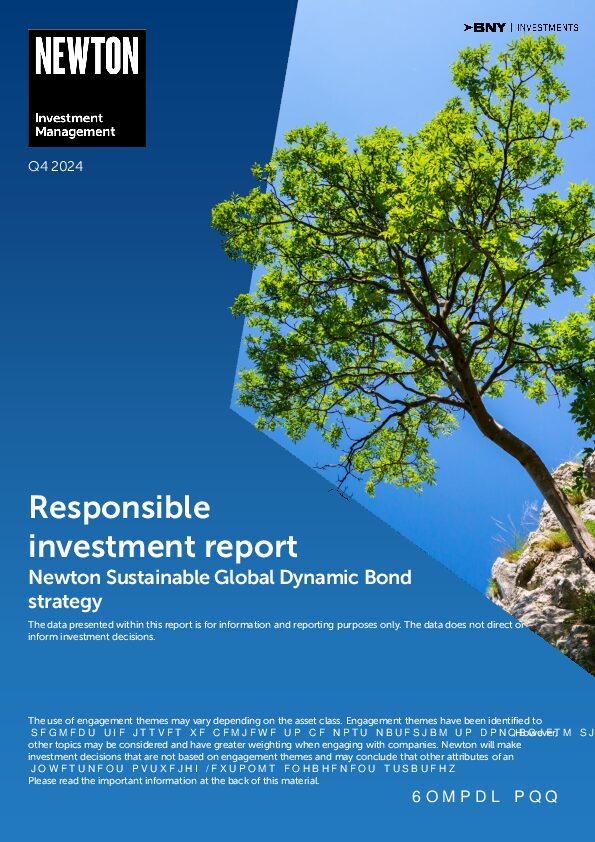The Global Dynamic Bond (Responsible) strategy was formerly referred to as the Sustainable Global Dynamic Bond strategy. The strategy has been renamed in order to comply with naming and marketing rules under the UK Sustainability Disclosure Requirements.
Strategy profile
-
Objective
-
The strategy aims to achieve income and capital growth over the medium term (3-5 years). It is managed to seek a minimum return of cash (SONIA (30-day compounded)) +2% per annum over five years before fees. In doing so, it aims to achieve a positive return on a rolling three-year basis (meaning a period of three years, no matter which day you start on). However, a positive return is not guaranteed and a capital loss may occur.
-
Performance benchmark
-
SONIA (30-day compounded) +2%
-
Sustainable investment restrictions
- Strategies that follow the Newton sustainable investment framework are subject to a set of minimum exclusions referred to as ‘sustainable investment restrictions’. These restrictions include companies involved in or that generate a material proportion of revenues from activities that are deemed to be harmful from an environmental or social perspective. Read more about our sustainable investment restrictions.
-
Strategy inception
-
Composite inception: 1 March 2019
-
Strategy available through pooled UK vehicle
-
BNY Mellon Global Dynamic Bond Fund (Responsible)
View Key Investor Information Document
View prospectus
View UK SDR Consumer Facing Disclosure
Investment team
The strategy is managed by an experienced team with a wide range of backgrounds and has dedicated support from Newton’s responsible investment team. In-house research analysts are at the core of our investment process, and our multidimensional research capabilities help to promote better-informed investment decisions.
Your capital may be at risk. The value of investments and the income from them can fall as well as rise and investors may not get back the original amount invested.
The strategy does not seek a specific sustainability outcome as part of its investment objective, but in pursuing its investment objective a minimum of 70% of holdings will be invested in securities assessed to have sustainability characteristics, in accordance with the Newton sustainable investment framework. This strategy does not have a UK sustainable investment label.













